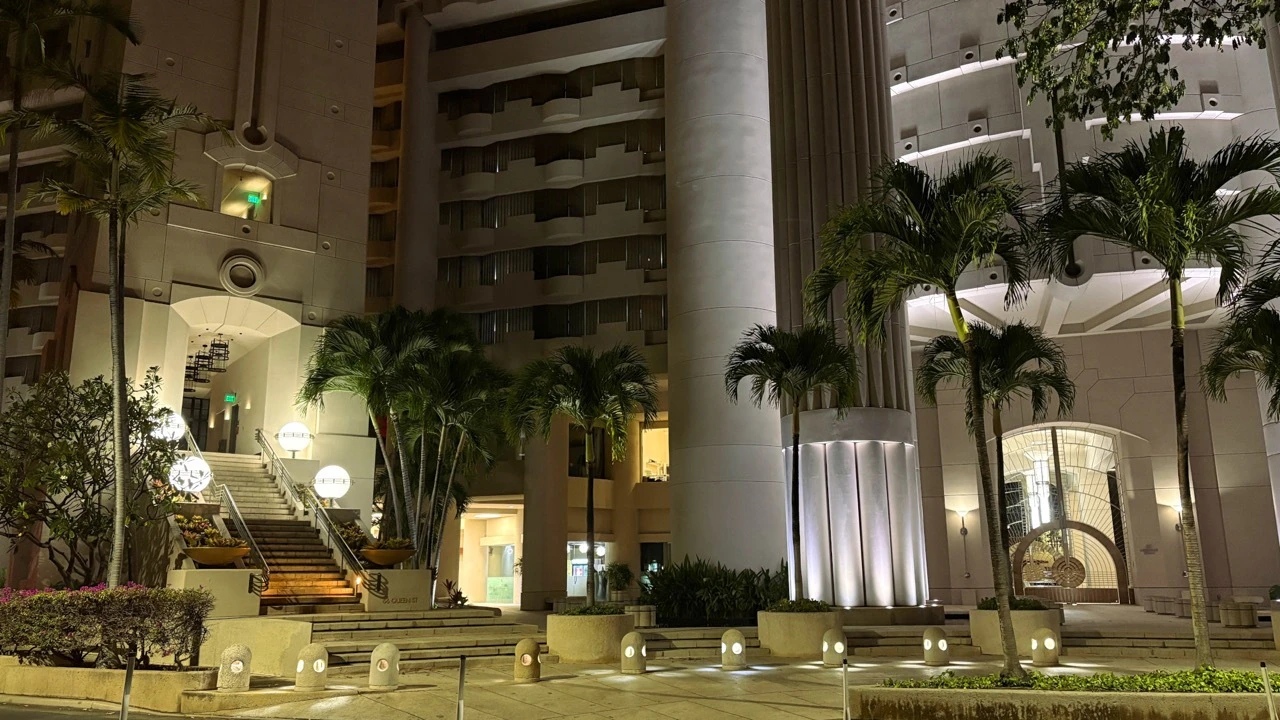For thousands of years, this stretch of the Nu‘uanu ahupua‘a lay at the edge of a tidal flat, where the sea mingled with fresh water from upland streams, creating a low, marshy basin. In those ancient days, the area was called Kou, where people would gather to watch ali‘i play games like kōnane and ‘ulu maika.
When foreigners began arriving, they found the naturally deep channel created by Nu‘uanu Stream accommodated their large ships. The port’s popularity grew as Pacific trade increased, leading to the rapid development of the surrounding community. As foreign ships began crowding Honolulu Harbor in the 19th century, the Kingdom’s need for a modern port was clear, and dredging began, carving deeper channels into the harbor floor. The displaced sand, coral rubble, and sediment were spread over the marshy land, burying the tidal basin with layers of man-made fill. What had once been an intertidal landscape was transformed into dry, level ground ready for a new wave of the growing city.
Beneath this fill, however, the old lagoon did not entirely disappear, and archaeologists continue to uncover a past that had been buried for nearly a century.
When the Harbor Court site was excavated in the early 1990s, crews found traditional Hawaiian artifacts, including ornaments and tools made of bone, shell, and stone, indicating that the area was inhabited as early as A.D. 1000-1200. Other layers produced artifacts such as ceramics and bottle glass, introduced in the late 1700s by merchants and sailors.
One deposit pulled from the excavation site revealed a line of post molds believed to be the remains of the wooden palisade, the protective wall of upright posts, that once surrounded Kamehameha’s compound, mere steps away from the ancient Pakaka heiau. For centuries, this heiau was a gathering place for kāhuna to learn and train in their respective arts. In one description, it is said that the walls of the heiau were adorned all around with the heads of men offered in sacrifice.
And, as is common throughout Honolulu’s older districts, they uncovered ancient burials. The quiet presence of iwi kūpuna confirmed that this ground had been lived upon, worked upon, and returned to for generations, long before Harbor Court was ever imagined.
By the time engineers prepared the site for building, the land had shared numerous tales of ancient life and buried history. The construction itself was not uneventful. Workers and foremen spoke of soft pockets beneath the surface that caused piles to drop farther than expected, disappearing into unseen spaces below. Others spoke of whispers in their ears while they worked, soft voices that were lost in the construction racket but real enough to make the workers pause and rub the chicken skin away.
Tenants and office staff have their own stories that they’ve shared over the years. Some spoke of odd shifts in perception and visual distortions, such as shimmering in the corner of their vision. Others reported sudden drops in pressure, dimming hallway lights, and objects floating across the room on their own. The most common spooky theme, though, is the seemingly haunted elevators.
A few months ago, I received a call from former newscaster Diane Ako. She had recently visited friends located on a high floor in the luxury condo/office building, and after her meeting, she caught the service elevator to leave. As she took note of the doors at both the front and back of the car and the moving blankets lining the walls, Diane stepped in, pressed the L button, and headed for the lobby.
Although no other buttons on the panel were lit, the elevator car stopped at the 28th floor, and the rear doors opened onto a short hallway. The dingy, off-white hall was dimly lit and seemed abandoned. Then, in typical “haunted house” fashion, the lights flickered and the doors slid closed. The elevator finally made its way down to the lobby as the blankets on the walls fluttered, adding to the creepy effect.
The ride seemed much longer than it should have been, and Diane called her friend that she’d just left to explain her strange experience in the elevator.
Her description was met with a chuckle, and her friend asked, “Did you catch the far one?”
Apparently, this is a common occurrence for building regulars, and maintenance workers can’t find anything wrong.
Some think it might be ghosts, others believe it’s because the tower was built over old burials. Although strange events occur frequently, especially with the elevators, many still find it unsettling. Life goes on at Harbor Court. But far beneath the tower’s foundation, the buried landscape continues to cradle old stories, waiting for whoever cares to listen.
For the latest news of Hawai‘i, sign up here for our free Daily Edition newsletter!





